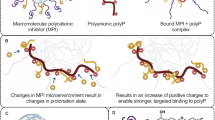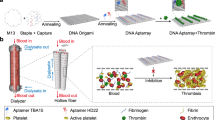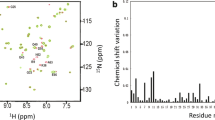Abstract
Patient safety and treatment outcome could be improved if physicians could rapidly control the activity of therapeutic agents in their patients. Antidote control is the safest way to regulate drug activity, because unlike rapidly clearing drugs, control of the drug activity is independent of underlying patient physiology and co-morbidities. Until recently, however, there was no general method to discover antidote-controlled drugs. Here we demonstrate that the activity and side effects of a specific class of drugs, called aptamers, can be controlled by matched antidotes in vivo. The drug, an anticoagulant aptamer, systemically induces anticoagulation in pigs and inhibits thrombosis in murine models. The antidote rapidly reverses anticoagulation engendered by the drug, and prevents drug-induced bleeding in surgically challenged animals. These results demonstrate that rationally designed drug-antidote pairs can be generated to provide control over drug activities in animals.
This is a preview of subscription content, access via your institution
Access options
Subscribe to this journal
Receive 12 print issues and online access
$209.00 per year
only $17.42 per issue
Buy this article
- Purchase on Springer Link
- Instant access to full article PDF
Prices may be subject to local taxes which are calculated during checkout




Similar content being viewed by others
References
Ebbesen, J. et al. Drug-related deaths in a department of internal medicine. Arch. Intern. Med. 161, 2317–2323 (2001).
Levine, M.N., Raskob, G., Landefeld, S. & Kearon, C. Hemorrhagic complications of anticoagulant treatment. Chest 119, 108S–121S (2001).
Hebert, P.C. et al. A multicenter, randomized, controlled clinical trial of transfusion requirements in critical care. Transfusion Requirements in Critical Care Investigators, Canadian Critical Care Trials Group. N. Engl. J. Med. 340, 409–417 (1999).
Bracey, A.W. et al. Lowering the hemoglobin threshold for transfusion in coronary artery bypass procedures: effect on patient outcome. Transfusion 39, 1070–1077 (1999).
Engoren, M.C. et al. Effect of blood transfusion on long-term survival after cardiac operation. Ann. Thorac. Surg. 74, 1180–1186 (2002).
Moscucci, M. Frequency and costs of ischemic and bleeding complications after percutaneous coronary interventions: rationale for new antithrombotic agents. J. Invasive Cardiol. 14 Suppl B, 55B–64B (2002).
Moscucci, M. et al. Predictors of major bleeding in acute coronary syndromes: the Global Registry of Acute Coronary Events (GRACE). Eur. Heart J. 24, 1815–1823 (2003).
Rao, S.V. et al. The relationship of blood transfusion and clinical outcomes in patients with acute coronary syndromes. J. Am. Med. Assoc. (in the press) (2004).
Al Suwaidi, J. et al. Prognostic implications of abnormalities in renal function in patients with acute coronary syndromes. Circulation 106, 974–980 (2002).
Rusconi, C.P. et al. RNA aptamers as reversible antagonists of coagulation factor IXa. Nature 419, 90–94 (2002).
Willis, M.C. et al. Liposome-anchored vascular endothelial growth factor aptamers. Bioconjug. Chem. 9, 573–582 (1998).
High, K.A. & Roberts, H.R. Coagulation Factor IX. in Molecular Basis of Thrombosis and Hemostasis (eds. High, K.A. & Roberts, H.R.) 215–237 (Marcel Dekker, New York, 1995).
White, R. et al. Generation of species cross-reactive aptamers using “toggle” SELEX. Mol. Ther. 4, 567–573 (2001).
Lin, H.F., Maeda, N., Smithies, O., Straight, D.L. & Stafford, D.W. A coagulation factor IX-deficient mouse model for human hemophilia B. Blood 90, 3962–3966 (1997).
Drolet, D.W. et al. Pharmacokinetics and safety of an anti-vascular endothelial growth factor aptamer (NX1838) following injection into the vitreous humor of rhesus monkeys. Pharm. Res. 17, 1503–1510 (2000).
Carr, J.A. & Silverman, N. The heparin-protamine interaction. A review. J. Cardiovasc. Surg. (Torino) 40, 659–666 (1999).
Kurz, K.D., Main, B.W. & Sandusky, G.E. Rat model of arterial thrombosis induced by ferric chloride. Thromb. Res. 60, 269–280 (1990).
Zhu, Y., Carmeliet, P. & Fay, W.P. Plasminogen activator inhibitor-1 is a major determinant of arterial thrombolysis resistance. Circulation 99, 3050–3055 (1999).
Dejana, E., Villa, S. & de Gaetano, G. Bleeding time in rats: a comparison of different experimental conditions. Thromb. Haemost. 48, 108–111 (1982).
Fay, W.P., Parker, A.C., Ansari, M.N., Zheng, X. & Ginsburg, D. Vitronectin inhibits the thrombotic response to arterial injury in mice. Blood 93, 1825–1830 (1999).
Spanier, T.B. et al. Selective anticoagulation with active site-blocked factor IXA suggests separate roles for intrinsic and extrinsic coagulation pathways in cardiopulmonary bypass. J. Thorac. Cardiovasc. Surg. 116, 860–869 (1998).
Choudhri, T.F. et al. Targeted inhibition of intrinsic coagulation limits cerebral injury in stroke without increasing intracerebral hemorrhage. J. Exp. Med. 190, 91–99 (1999).
Feuerstein, G.Z. et al. Antithrombotic efficacy of a novel murine antihuman factor IX antibody in rats. Arterioscler. Thromb. Vasc. Biol. 19, 2554–2562 (1999).
Schoenhagen, P. & Nissen, S.E. Coronary atherosclerotic disease burden: an emerging endpoint in progression/regression studies using intravascular ultrasound. Curr. Drug Targets Cardiovasc. Haematol. Disord. 3, 218–226 (2003).
Hoffman, M. & Monroe, D.M., III. A cell-based model of hemostasis. Thromb. Haemost. 85, 958–965 (2001).
Rosenberg, R.D. Vascular-bed-specific hemostasis and hypercoagulable states: clinical utility of activation peptide assays in predicting thrombotic events in different clinical populations. Thromb. Haemost. 86, 41–50 (2001).
Minnema, M.C. et al. Activation of clotting factors XI and IX in patients with acute myocardial infarction. Arterioscler. Thromb. Vasc. Biol. 20, 2489–2493 (2000).
Samama, M.M., Gerotziafas, G.T., Elalamy, I., Horellou, M.H. & Conard, J. Biochemistry and clinical pharmacology of new anticoagulant agents. Pathophysiol. Haemost. Thromb. 32, 218–224 (2002).
Reed, M.D. & Bell, D. Clinical pharmacology of bivalirudin. Pharmacotherapy 22, 105S–111S (2002).
DeAnda, A., Jr. et al. Pilot study of the efficacy of a thrombin inhibitor for use during cardiopulmonary bypass. Ann. Thorac. Surg. 58, 344–350 (1994).
Acknowledgements
We thank K.A. High for plasma from factor IX-deficient mice. We thank B. Harrington, R. Califf, J. Alexander and B. Anderson for their continued intellectual support of the development of antidote-controlled anticoagulant and antithrombotic agents. This work was supported by grants from the American Heart Association to C.P.R. and the National Institutes of Health to B.A.S. and W.P.F.
Author information
Authors and Affiliations
Corresponding authors
Ethics declarations
Competing interests
C.P.R. and B.A.S. have equity in Regado Biosciences, Inc., a biotechnology company spun out of Duke University to commercialize drug-antidote pairs.
Rights and permissions
About this article
Cite this article
Rusconi, C., Roberts, J., Pitoc, G. et al. Antidote-mediated control of an anticoagulant aptamer in vivo. Nat Biotechnol 22, 1423–1428 (2004). https://doi.org/10.1038/nbt1023
Received:
Accepted:
Published:
Issue Date:
DOI: https://doi.org/10.1038/nbt1023
This article is cited by
-
Novel nanotherapeutics for cancer immunotherapy by albumin nanoparticles functionalized with PD-1 and PD-L1 aptamers
Cancer Nanotechnology (2024)
-
Generalizable anchor aptamer strategy for loading nucleic acid therapeutics on exosomes
EMBO Molecular Medicine (2024)
-
An aptamer-based depot system for sustained release of small molecule therapeutics
Nature Communications (2023)
-
Development and classification of RNA aptamers for therapeutic purposes: an updated review with emphasis on cancer
Molecular and Cellular Biochemistry (2023)
-
A DNA origami-based aptamer nanoarray for potent and reversible anticoagulation in hemodialysis
Nature Communications (2021)



